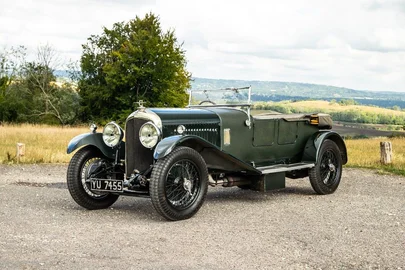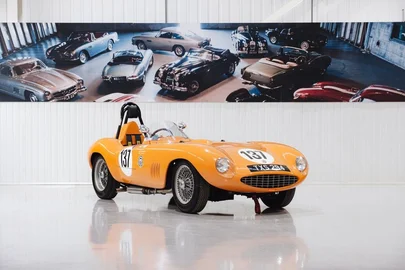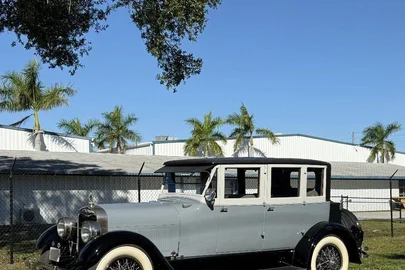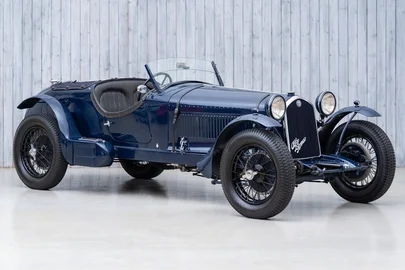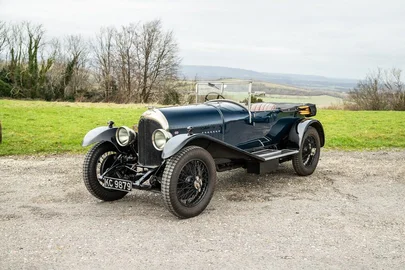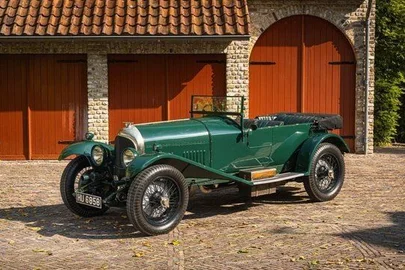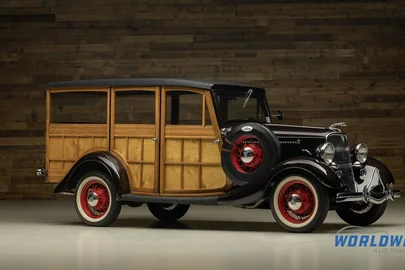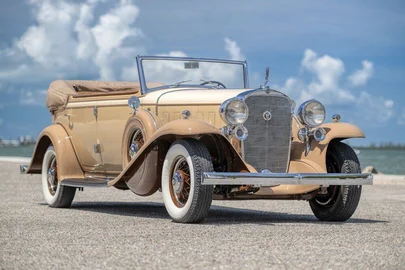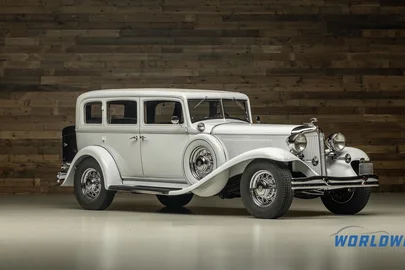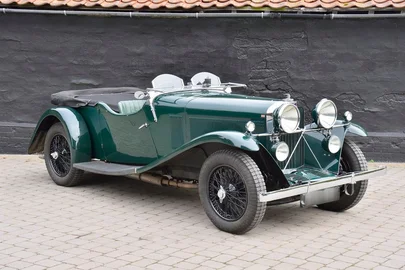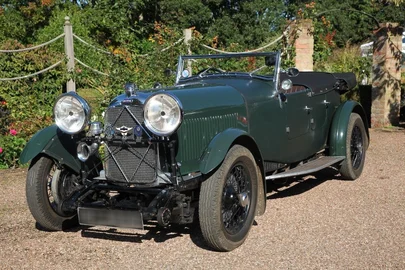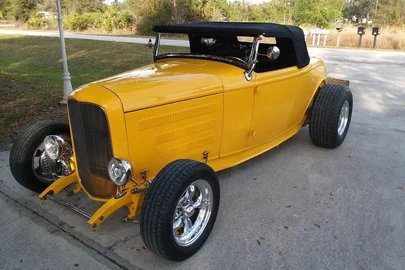
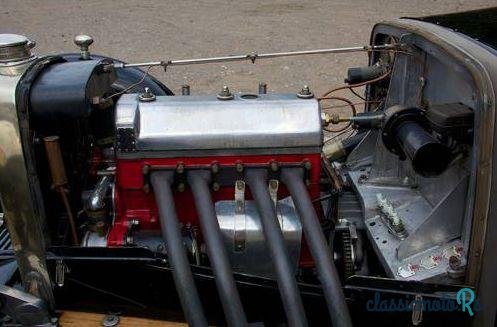
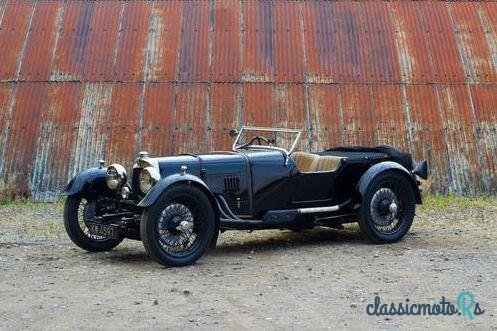
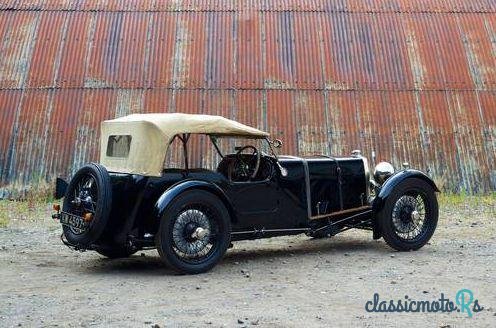
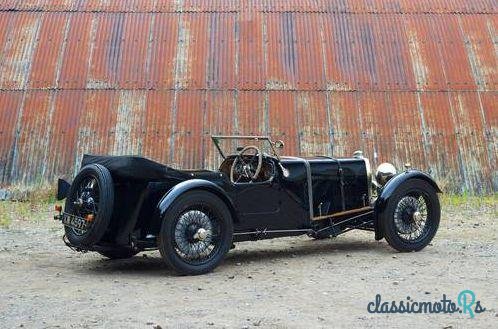
5 photos
1928' Aston Martin 1½ Litre 'Chassis S4'
Signaler cette annonce!Évaluer!Ajouter aux favoris
NégociablePublié 19 Février 2017ID: 9VNIt3
Périmée
il y a 8 années, 9 mois
il y a 8 années, 9 mois
Information from the owner
Corps: Coupés Sportives
Âge: 89 années
Couleur de la carrosserie: Argenté
Commentaires du vendeur sur 1928' Aston Martin 1½ Litre 'Chassis S4'
KW 4897, is the fourth car built by Aston Martin Motors Ltd. the company having been formed in October 1926, and is the very first short / sports chassis made thus the ’S’ designation in the chassis number. S4 was, for many years thought to be the 1928 Motor Show car but further detailed research by early Aston Martin historian Inman Hunter and former owner Derek Green reveals a much more interesting history in the year preceding the 1928 Motor Show.
On the 1927 Motor Show stand Aston Martin Motors offered a saloon and a 4 seat tourer but alongside these cars proudly displayed their dry sump, prototype short chassis sports model. The prototype was unfinished and not capable of running, but it did have a clover leaf body and the distinctive earlier double AM badges on the radiator. This is believed to be the first time S4 was seen in public.
To tell the next part of the story we go to Le Mans. Lord Charnwood, a financier of the company and close friend of Bertelli, entered 3 cars in the 1928 24 hour race. The plan was to run the Motor Show prototype sports chassis along with 2 further specifically developed cars ( later given the chassis numbers LM1 and LM2) that were to be built after Christmas in 1927 and early 1928. The two LM cars were ready in good time but required running in and considerable testing therefore to reduce the workload it was decided to limit the entry to two cars and withdraw the third car, S4 just before the race in June.
After Le Mans LM1 was prepared as a works demonstrator and development car. S4 was registered and sold in September 1928 to its first owner F.A. Rhodes. Only a month later the car returned to the factory for an engine rebuild, it is supposed that due to the high number of development miles the car did as the works demonstrator and getting ready for Le Mans it was repaired ‘free of charge’ as there is no record on the works service record of any payment. Importantly the engine in S4 is the earliest Aston Martin dry sump engine and apart from LM1 and LM2, no other cars carried a dry sump engine until chassis number S16.
S4 retains further interesting and unique features, the two AM badges on the radiator. LM1 and LM2 were originally styled in this way but were rebadged with the ‘wings’ motif.. The radiator filler cap has a flange for a stone guard, a feature that was only present on team cars and photographs from 1933 show that the side elevation is identical to LM1, believed to give the three Le Mans team cars the same look.
Rhodes, sold S4 after 5 years to Dr R.Wood, of Far Headingly, Leeds who in a desire to improve performance installed a 2 litre, 6 cylinder, 2-stoke, Scott engine developing 86HP. This exceptional performance was undone by a lack of ground clearance and thankfully the original engine was reinstalled shortly after. The experimental Scott engine can still be seen at the Birmingham Science Museum. The car subsequently changed hands 5 times until acquired by the Aston Martin Chairman Victor Gauntlett in the same year he purchased Aston Martin Company with Tim Hearley. The car then passed to Derek Green, to help finance the Aston Martin Le Mans project and a considerable amount of practical restorative work was carried out in 1984.
In 1990 S4 was used in the hugely popular television adaptation of the P.G. Wodehouse classic ‘Jeeves and Wooster’ staring Stephen Fry and Hugh Laurie. When seeing it depicted as Mr Wooster’s personal steed and embodying the dizzy highs of the ‘Bright Young Things' era, it says it all. Style at its best!
The car is offered for sale in wonderful condition throughout and is a joy to drive. The 3-seat body and enclosed cycle mudguards have a very attractive low line afforded by the dry sump arrangement and the distinctive radiator and badges remain with their nicely patinated German nickel silvering
This is an extremely rare opportunity to acquire one of the most significant Aston Martins of the period, which will be welcome at all significant motoring shows in wonderful condition and on the button.
On the 1927 Motor Show stand Aston Martin Motors offered a saloon and a 4 seat tourer but alongside these cars proudly displayed their dry sump, prototype short chassis sports model. The prototype was unfinished and not capable of running, but it did have a clover leaf body and the distinctive earlier double AM badges on the radiator. This is believed to be the first time S4 was seen in public.
To tell the next part of the story we go to Le Mans. Lord Charnwood, a financier of the company and close friend of Bertelli, entered 3 cars in the 1928 24 hour race. The plan was to run the Motor Show prototype sports chassis along with 2 further specifically developed cars ( later given the chassis numbers LM1 and LM2) that were to be built after Christmas in 1927 and early 1928. The two LM cars were ready in good time but required running in and considerable testing therefore to reduce the workload it was decided to limit the entry to two cars and withdraw the third car, S4 just before the race in June.
After Le Mans LM1 was prepared as a works demonstrator and development car. S4 was registered and sold in September 1928 to its first owner F.A. Rhodes. Only a month later the car returned to the factory for an engine rebuild, it is supposed that due to the high number of development miles the car did as the works demonstrator and getting ready for Le Mans it was repaired ‘free of charge’ as there is no record on the works service record of any payment. Importantly the engine in S4 is the earliest Aston Martin dry sump engine and apart from LM1 and LM2, no other cars carried a dry sump engine until chassis number S16.
S4 retains further interesting and unique features, the two AM badges on the radiator. LM1 and LM2 were originally styled in this way but were rebadged with the ‘wings’ motif.. The radiator filler cap has a flange for a stone guard, a feature that was only present on team cars and photographs from 1933 show that the side elevation is identical to LM1, believed to give the three Le Mans team cars the same look.
Rhodes, sold S4 after 5 years to Dr R.Wood, of Far Headingly, Leeds who in a desire to improve performance installed a 2 litre, 6 cylinder, 2-stoke, Scott engine developing 86HP. This exceptional performance was undone by a lack of ground clearance and thankfully the original engine was reinstalled shortly after. The experimental Scott engine can still be seen at the Birmingham Science Museum. The car subsequently changed hands 5 times until acquired by the Aston Martin Chairman Victor Gauntlett in the same year he purchased Aston Martin Company with Tim Hearley. The car then passed to Derek Green, to help finance the Aston Martin Le Mans project and a considerable amount of practical restorative work was carried out in 1984.
In 1990 S4 was used in the hugely popular television adaptation of the P.G. Wodehouse classic ‘Jeeves and Wooster’ staring Stephen Fry and Hugh Laurie. When seeing it depicted as Mr Wooster’s personal steed and embodying the dizzy highs of the ‘Bright Young Things' era, it says it all. Style at its best!
The car is offered for sale in wonderful condition throughout and is a joy to drive. The 3-seat body and enclosed cycle mudguards have a very attractive low line afforded by the dry sump arrangement and the distinctive radiator and badges remain with their nicely patinated German nickel silvering
This is an extremely rare opportunity to acquire one of the most significant Aston Martins of the period, which will be welcome at all significant motoring shows in wonderful condition and on the button.
